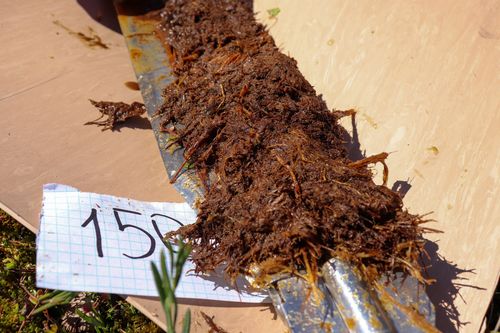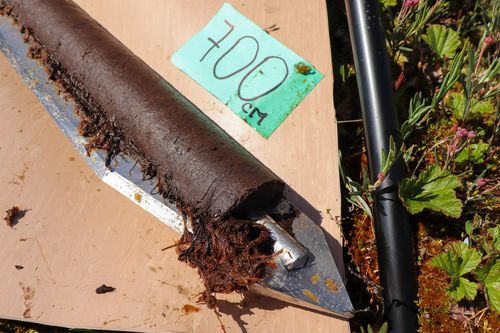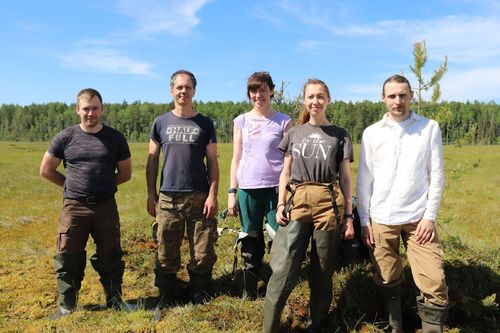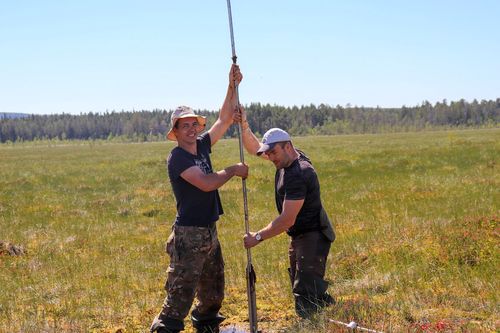– Sambalskoye mire has been chosen for science communication for a good reason. It has been thoroughly studied: it’s the only peatland in Karelia for which 52 peat samples have been radiocarbon dated. In 1989, our colleagues led by Galina A. Yelina took the samples every 10-15 cm down the 7-m borehole depth. The analysis showed the Salmbalskoye mire to be almost 10 millennia old. The rate of peat vertical increment varied from 0.2 to 3 millimeters a year depending on the climatic conditions. The average peat deposition rate has been about 0.7 mm per year. This may seem to be low. Considering the total area of mires, however, which is nearly a third of the territory in Karelia, it turns out they deposit tons of carbon every year, – tells Stanislav Kutenkov, Head of the Mire Ecosystems Laboratory at the Institute of Biology KarRC RAS.
KarRC RAS Museum of Applied Environmental Research is being created in collaboration with the North-Centre Association with funding from the Russian presidential grant for the development of the civil society. The museum opening is scheduled for September 2022.


Peat samples from 1.5 and 7 m depths
Apart from their science communication activities, scientists continue wetland studies. The new borehole is deeper than the previous one and peat samples aged approx. 10 millennia were collected from 7.3 m depth from the modern surface. The samples will be subjected to botanical analysis to identify the plants that had inhabited the wetland in its early development stages.
Sambalskoye wetland is a regional-level nature monument. It is situated in the Prionezhsky District, not far from Novaya Vilga settlement. The wetland occupies 430 hectares.
Sambalskoye is a typical South Karelian raised bog composed of oligotrophic ridge-hollow Sphagnum-dominated and mesotrophic herb-Sphagnum areas. For locals, the bog is where they go for cranberry and cloudberry while for scientists it is an important object of palynological (related to the study of pollen grains and spores of plants, fungi, and bacteria) and paleogeographic studies. It is an element of the East Fennoscandian network of key model areas.

Participants of the field trip: Viktor Mironov, Stanislav Kutenkov, Elizaveta Linkevich, Maria Dmitrieva, and Pavel Ignashov
As Stanislov Kutenkov explained, the importance of wetland research ensues not only from the substantial area they occupy in our republic. Wetlands are a major player in the planet’s carbon balance. The most valuable quality of natural wetlands is that they sequester carbon dioxide and act as carbon sinks. We know that they withdraw at least twice as much CO2 from cycling as boreal forests. Global warming and international climate agreements render research on the role of natural ecosystems in the carbon balance ever more topical. Specialists from Karelian Research Centre’s institutes are also engaged in research on greenhouse gas emissions.




